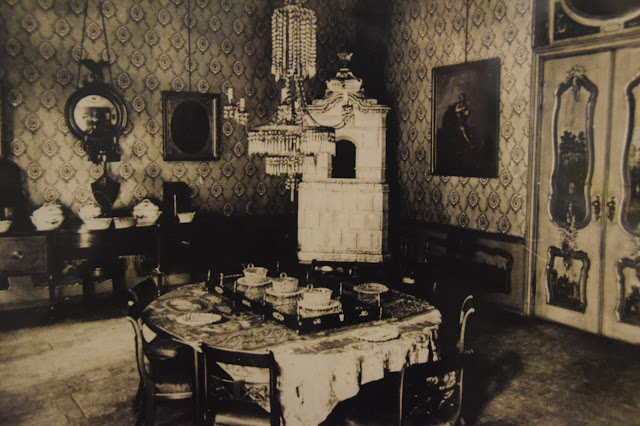Uphagen house
Located
at 12 Długa Street in Gdańsk is the only one in Poland and one of only a
few 18th century merchant town houses in Europe open to visitors.
Johann Uphagen purchased this town house in 1775. Over a few years the town house was completely modernised and adapted to the needs of the new wealthy owner. Uphagen lived in the house until his death in 1802 when the house became the property of successive heirs of the family, staying throughout the 19th century in the hands of the same family . In 1911 a museum was created in Uphagen house and was open until 1944, when the German conservators removed its interior and furnishings. The house was destroyed in March 1945 like much of the rest of the city.
The house at 12 Długa Street was rebuilt within just ten years from the end of the war with the idea of restoring the popular merchant interior museum for Gdansk inhabitants; however this idea was not implemented until 1993-1998, when the house was made available to visitors.
 |
| XV-XVI |
 |
| XVI-XVII |
 |
| XVIII |
The house has a vestibule i.e. a high internal room with a floor made from stone panels and stucco work decorating walls and ceiling. A separate room was created in its western part (to the right of the entrance) which used to be the merchant office and is now a museum shop.
A small drawing-room is located on the mezzanine floor with wooden panels on the walls presenting painted Chinese topical scenes, which were very popular in the 18th century, hence its name, the Tea Room, which was given to it before WWII. The tea room has an 18th century stove produced by a Gdansk manufacturer.
The temporary exhibition halls are located on the second floor in the pre-war large and small bedrooms and in the small drawing-room.
The drawing-room is located on the first floor from the street side – the most representative interior of the house. The room is decorated with white wooden panels with pictures depicting antique buildings, which were another very popular subject in the 18th century. The wooden decorations are painted gold and colour lasered. The space above the wooden panels is decorated with fabrics. The original stove is located in the corner niche, and the niche opposite used to be decorated with an outstanding chiming clock, the work of a well known Gdansk clock maker (lost after World War II). The ceiling is decorated with sophisticated ornamentation, which used to be painted gold and colour lasered. At present the interior furnishing consists of a few armchairs and sofas and two chests of drawers.
The large dining room is located on the side of the internal courtyard, with wooden panels depicting mythological and antique subjects, Roman buildings, while the walls are covered with damask. The furniture of this room is being completed.
The side wing accommodated three small drawing-rooms with decorated wooden panels depicting insects, flowers and birds. One of them was used as a music room.
The annex accommodates a small dining room with table and chairs originating from the former furnishings of the house. The auxiliary premises – kitchen and pantry, are located on the ground floor of the annex and the side wing. In the 18th century Gdańsk kitchens still used stoves with an open fire and such a kitchen was installed in Uphagen house. The kitchen equipment is on show in this room as well. The pantry is located next to the kitchen and contains furnishings used to store food products.
















No comments:
Post a Comment